-
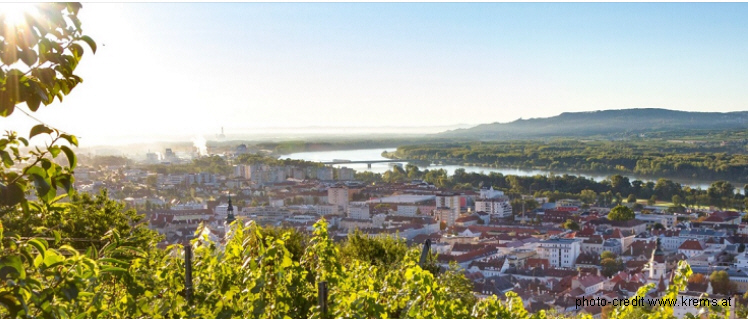
Host City Krems of 44. IAD Conference (6.Febr-9.Febr 2023), Austria: photo credit: Stadt Krems
-

Danube River, 44.IAD Conf Krems (8.2.2023), Wachau, Austria photo credit: Віктор Вишневський (UA)
-
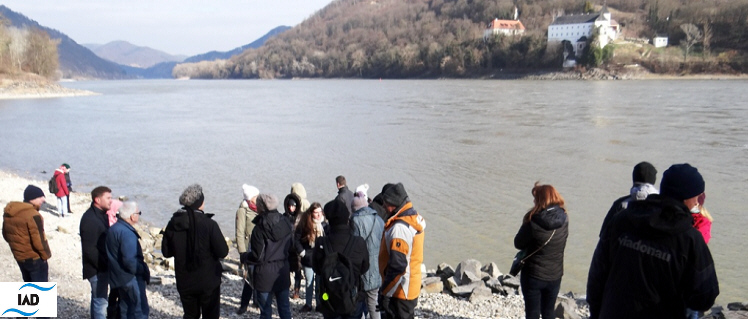
Danube River Excursion, 44.IAD Conf Krems (8.2.2023), Wachau (near Grimsing), Austria photo: K.Teu
-

Danube stretch in winter mood, Romania, 2010 photo credit: Harald Kutzenberger
-
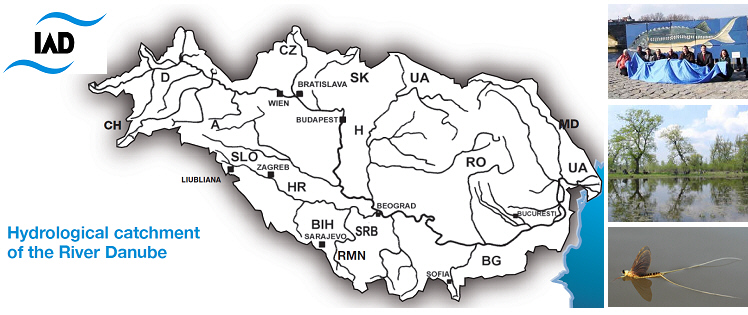
Map of the Danube River Basin and IAD-countries photo credit: several authors
-
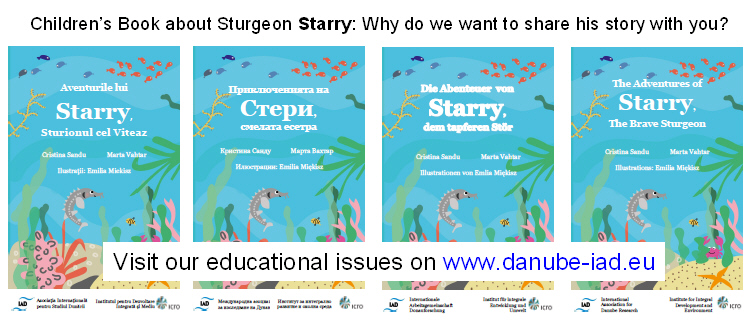
Children's Book by Sandu, Vahtar and Miękisz (2020), English Book & Translations credit: book illustrations
-

Children's Book by Sandu, Vahtar and Miękisz (2020), Multilingual Translations credit: book illustrations
-
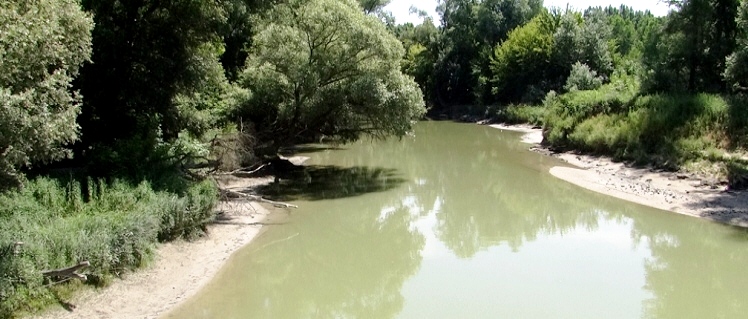
Veľkolélsky island, Danube floodplain, Slovakia, 2022 photo credit: Katrin Teubner
-
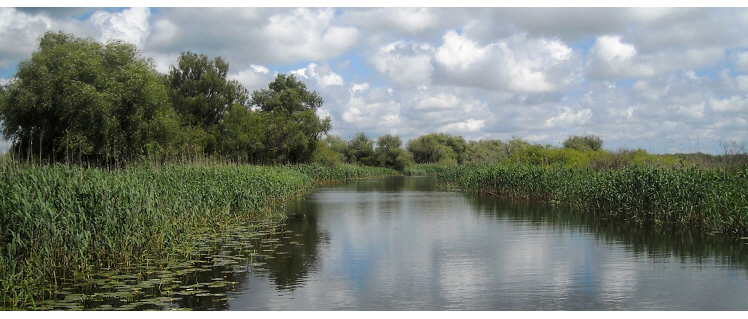
Danube channel, Romania photo credit: Cristina Sandu
-

Children's Book by Sandu, Vahtar and Miękisz (2020), Translation into Romanian credit: book illustrations
-

Sturgeon, Romania photo credit: Viorel Gavrila
-
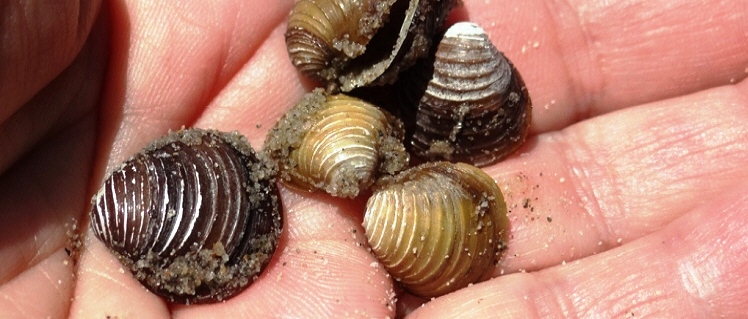
Veľkolélsky island, Corbicula sp., Slovakia. 2022 photo credit: Katrin Teubner
-

Veľkolélsky island, Slovakia, 2022 photo credit: Katrin Teubner
-
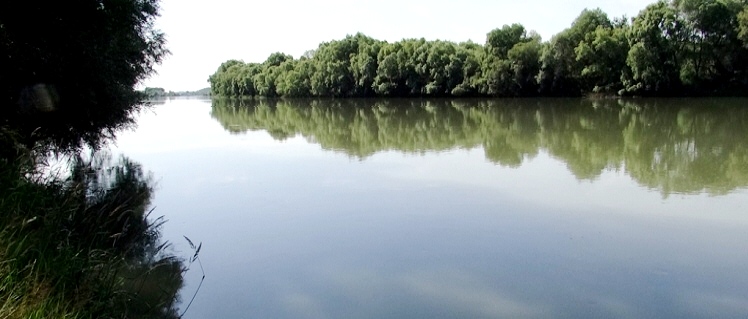
Danube sidearm near Gabčíkovo dam, Slovakia, 2022 photo credit: Katrin Teubner
-
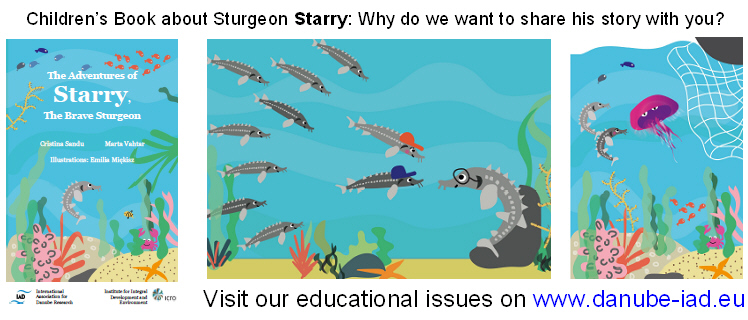
Children's Book by Sandu, Vahtar and Miękisz (2020), English credit: book illustrations
-
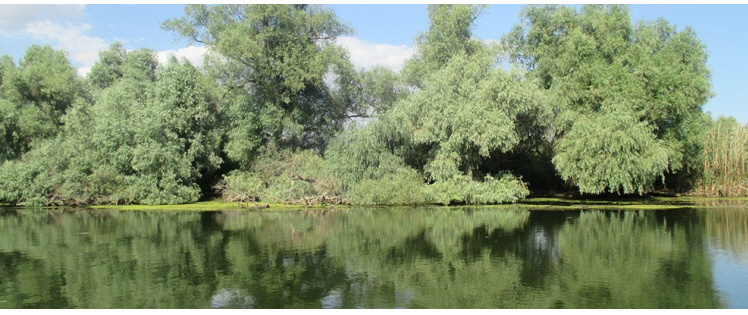
Channel Danube Delta, Romania photo credit: Cristina Sandu
-

Children's Book by Sandu, Vahtar and Miękisz (2020), Colouring Books credit: book illustrations
-
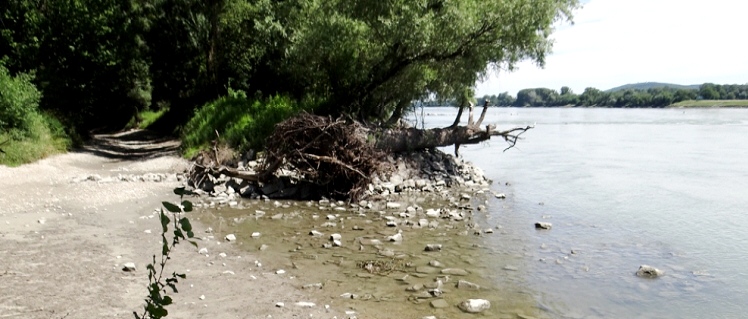
Daube river at Bratislava, Slovakia, 2022photo credit: Katrin Teubner
-

Danube River floodplain forest, Hedera helix, Austria, 2023photo credit: Katrin Teubner
-
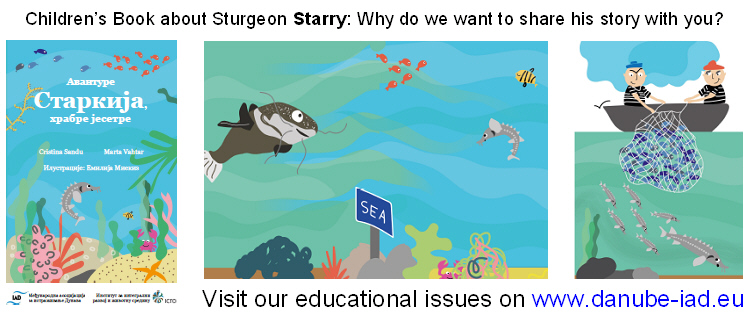
Children's Book by Sandu, Vahtar and Miękisz (2020), Translation into Serbian credit: book illustrations
-
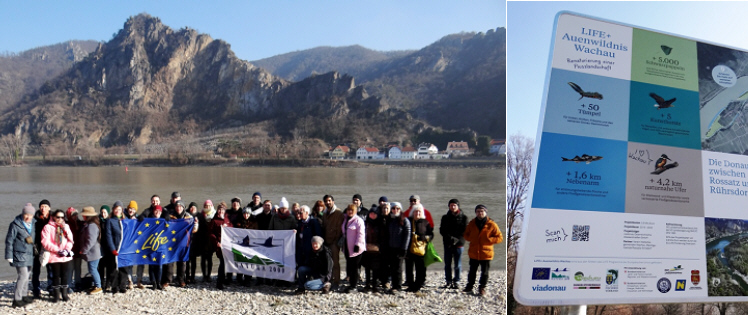
Danube River Excursion, 44.IAD Conf Krems (8.2.2023), Wachau (Rossitz-Rührdorf), Austria photo: K.Teu
-
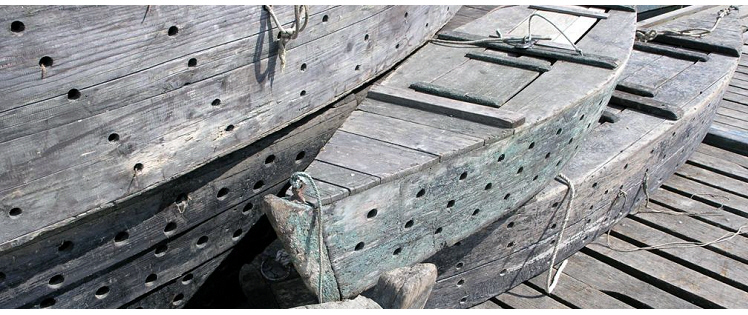
Fish catch boats in Gemenc, Hungary, 2007 photo credit: Katrin Teubner
-

Gemenc fishery, Hungary, 2007 photo credit: Katrin Teubner
-

Children's Book by Sandu, Vahtar and Miękisz (2020), Translation into Hungarian credit: book illustrations
-
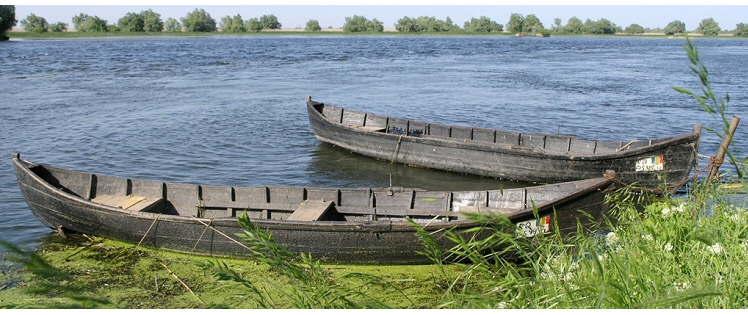
Fisherboats at village Mila, Romania, 2005 photo credit: Katrin Teubner
-
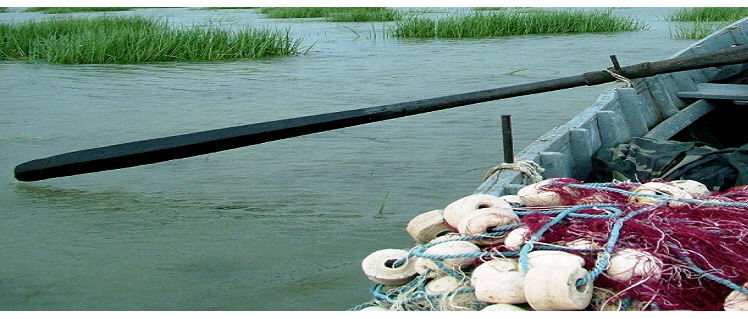
Fisherboat, Romania, 2005 photo credit: Nicolae S.P.
-

Fishermen boat, Romania photo credit: Cristina Sandu
-

Danube stretch in Orsova, Romania, 2005 photo credit: Katrin Teubner
-

Hydromorphological assessment for Danube tributaries: Drava and Mura photo credit: Ulrich Schwarz
-

Children's Book by Sandu, Vahtar and Miękisz (2020), Translation into Croatian credit: book illustrations
-
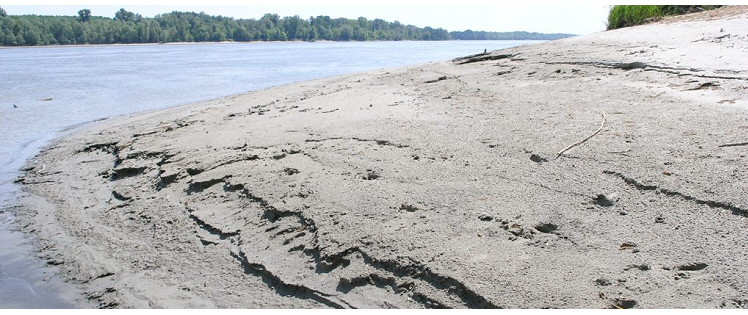
Danube stretch in Gemenc, Hungary, 2007 photo credit: Katrin Teubner
-
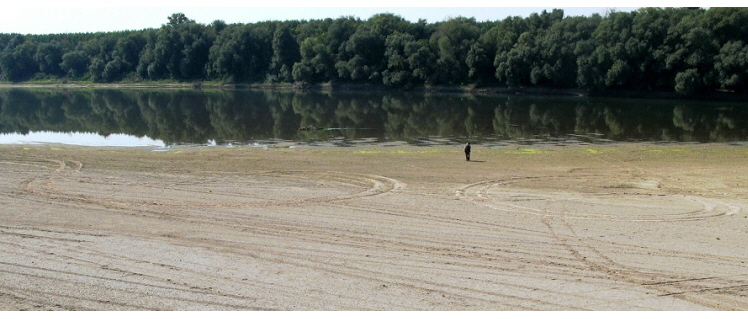
Danube side channel, Romania, 2005 photo credit: Nicolae S.P.
-
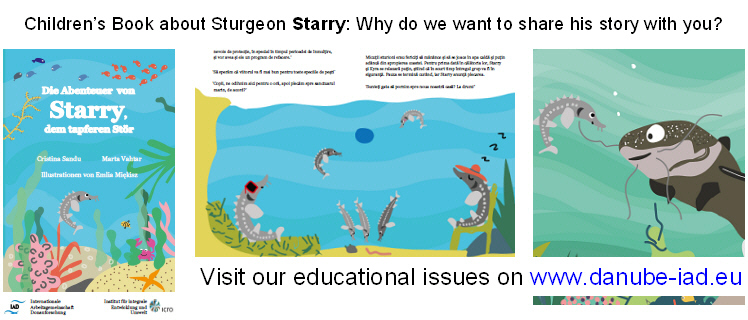
Children's Book by Sandu, Vahtar and Miękisz (2020), Translation into German credit: book illustrations
-
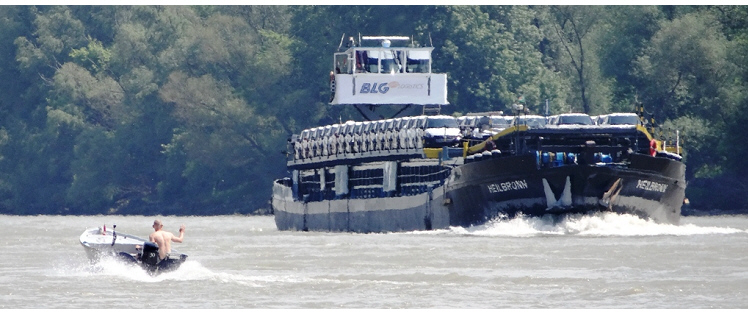
Danube Schönau, Austria, 2013 photo credit: Katrin Teubner
-
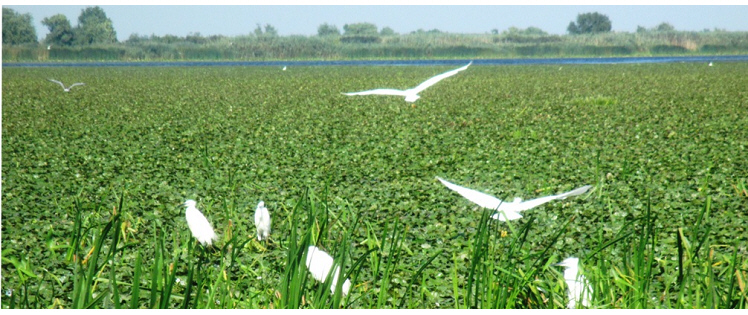
Egrets at Channel Danube Delta, Romania, 2016 photo credit: Cristina Sandu
-
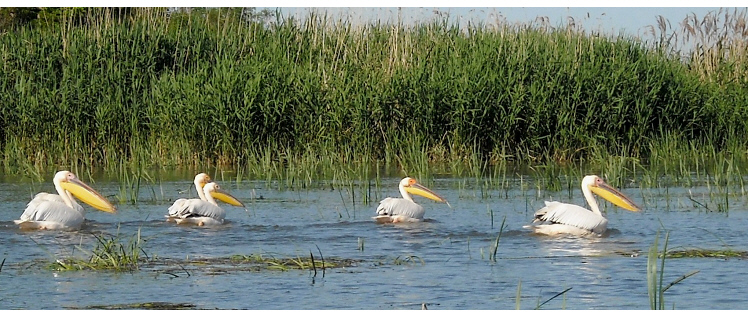
Danube Delta, pelicans, Romania photo credit: Cristina Sandu
-
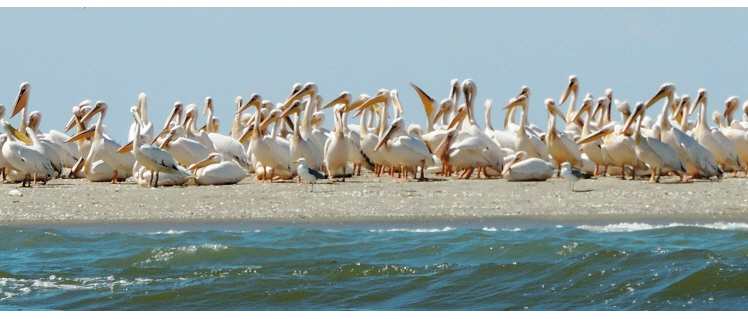
Danube Delta, pelican colony, Romania photo credit: Cristina Sandu
-
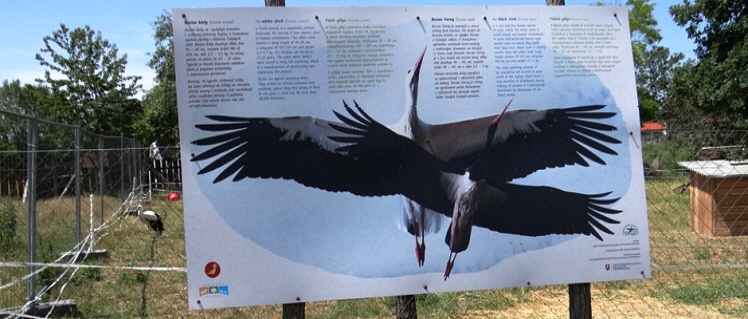
Veľkolélsky island, Slovakia, 2022photo credit: Katrin Teubner
-
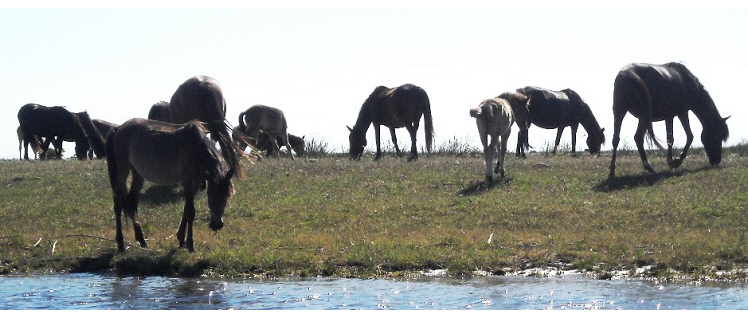
Horses in the Danube Delta, Romania photo credit: Cristina Sandu
-
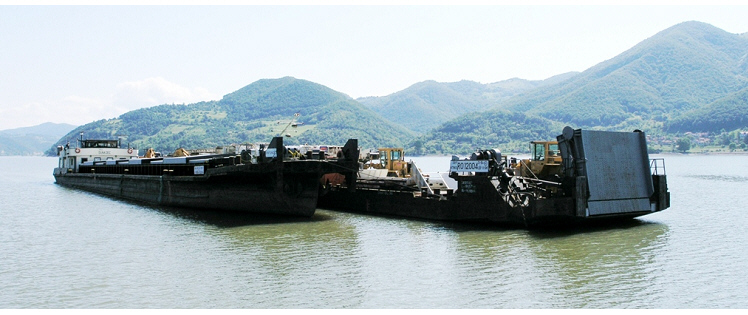
Danube, Romania, 2005 photo credit: Katrin Teubner
-
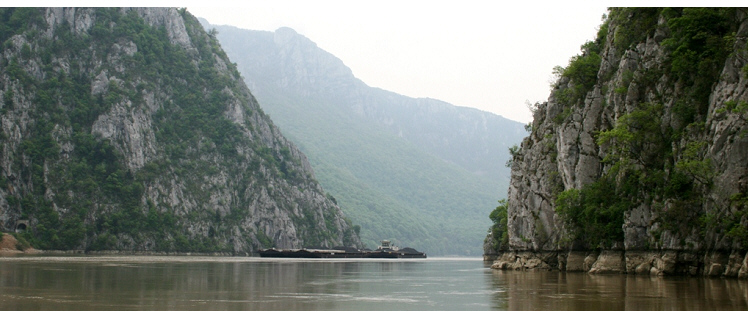
Danube, Romania photo credit: Nicolae Găldean
-
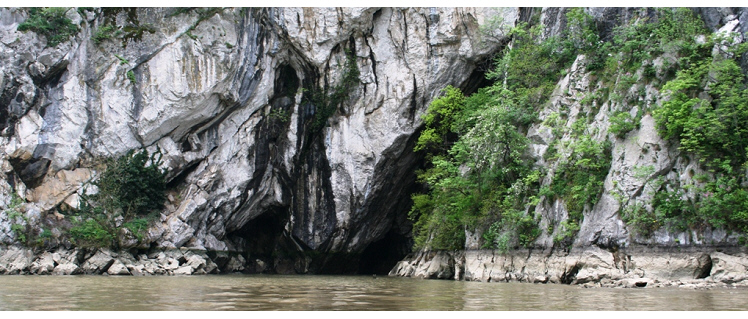
Danube, Romania photo credit: Nicolae Găldean
-
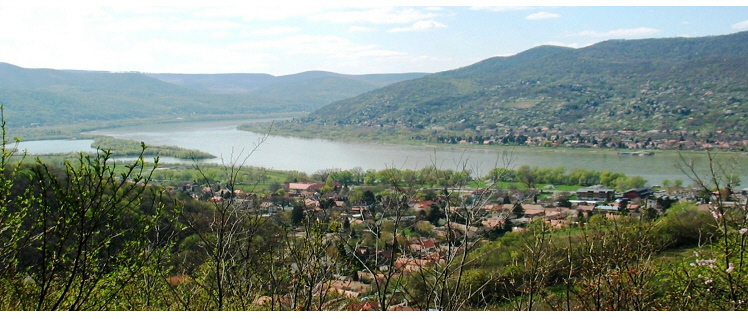
Danube at Visegrád, Hungary, 2019 photo credit: Mária Dinka
-
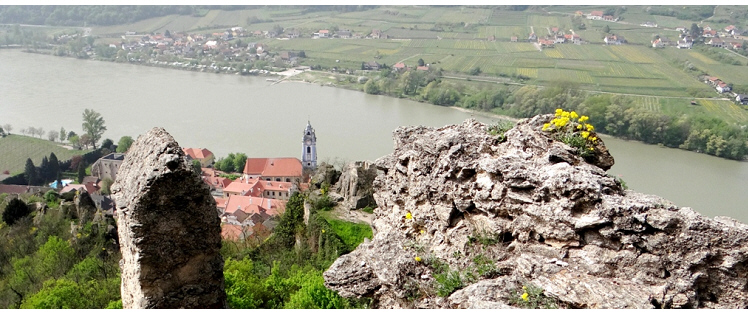
Danube stretch at town Dürnstein, Austria, 2013 photo credit: Katrin Teubner
-

Danube Delta, Chironomidae at Lake Puiu, Romania, 2005 photo credit: Katrin Teubner
-
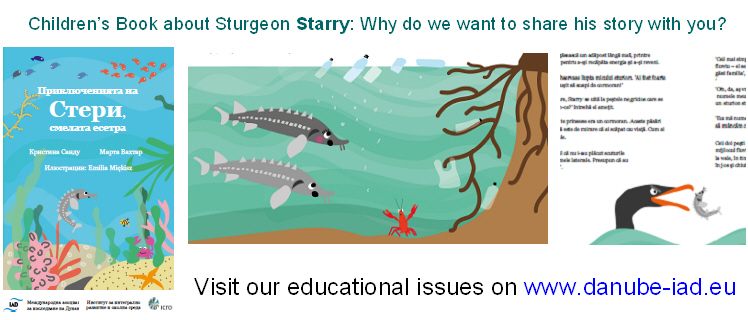
Children's Book by Sandu, Vahtar and Miękisz (2020), Translation into Bulgarian credit: book illustrations
-
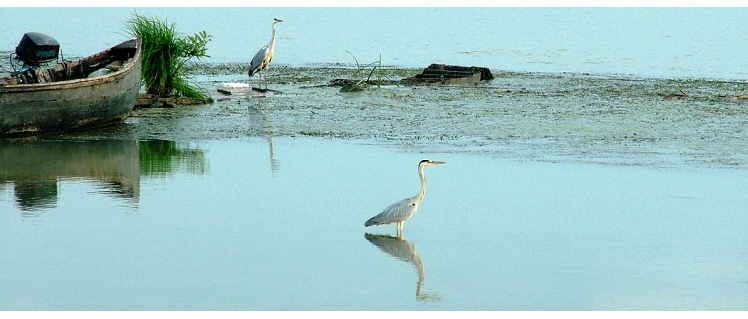
Danube Delta, Grey Herons, Romania, 2005 photo credit: Nicolae S.P.
-
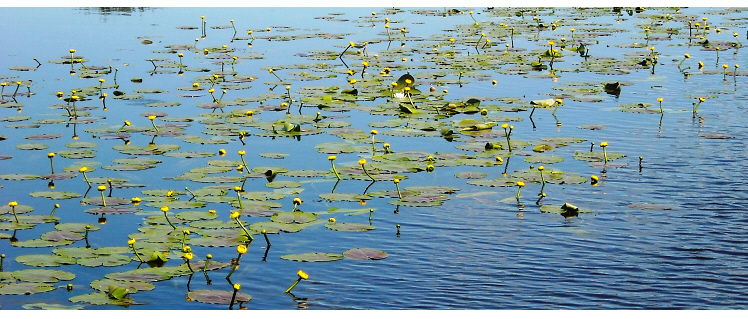
Danube Delta, Yellow Water Lily, Romania photo credit: Cristina Sandu
-

Danube Delta, stork nest, Romania photo credit: Cristina Sandu
-
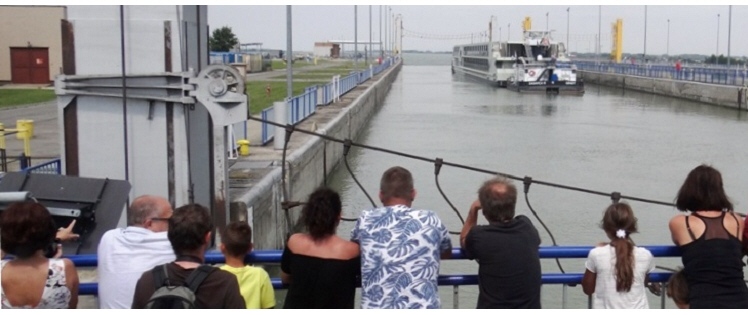
Hydroelectric power plant Gabčíkovo, Slovakia, 2018 photo credit: Katrin Teubner
-
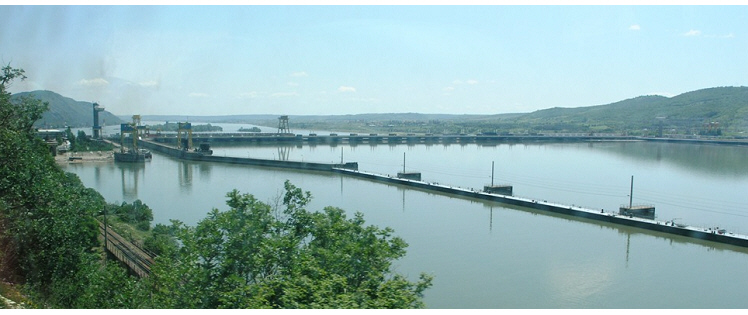
Iron Gates hydroelectric power plant, Romania, 2005 photo credit: Katrin Teubner
-

Macrophytes in the Danube Delta, Yellow Water Lily, Romania, 2005 photo credit: Katrin Teubner
-
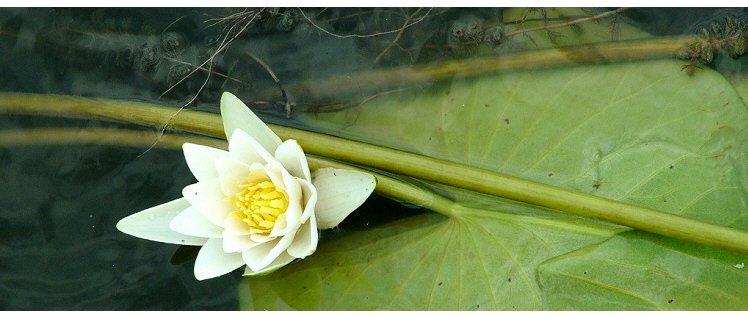
Channel Danube Delta, White Water Lily, Nymphaea alba, Romania, 2005 photo credit: Nicolae Ş.P.
-

Floodplain Danube Delta, 2005 photo credit: Nicolae Ş.P.
-
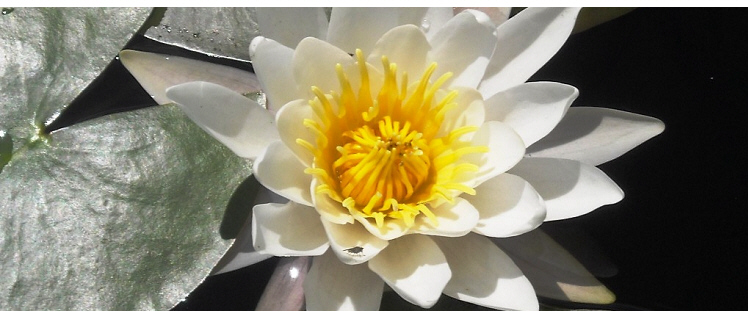
Danube Delta, White Water Lily, Nymphaea alba, Romania photo credit: Cristina Sandu
-
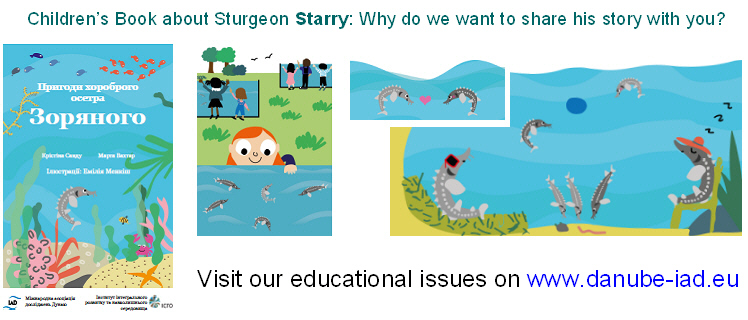
Children's Book by Sandu, Vahtar and Miękisz (2020), Translation into Ukrainian credit: book illustrations
-
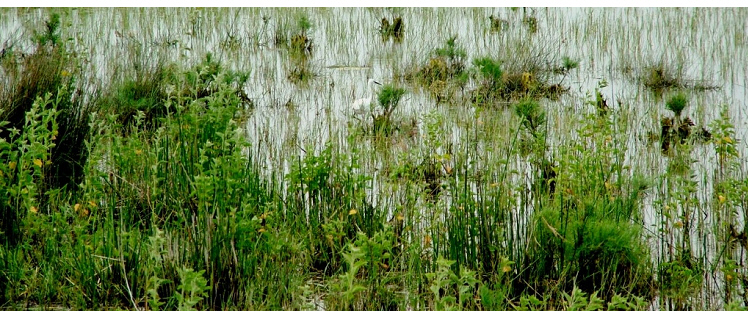
Floodplain Danube Delta, egrets, 2005 photo credit: Nicolae Ş.P.
-
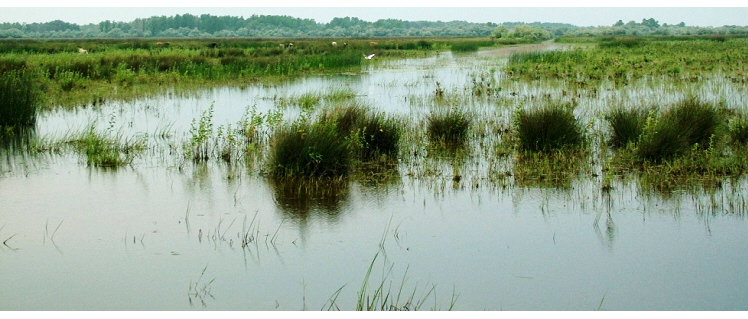
Floodplain Danube Delta, egrets, 2005 photo credit: Nicolae Ş.P.
-
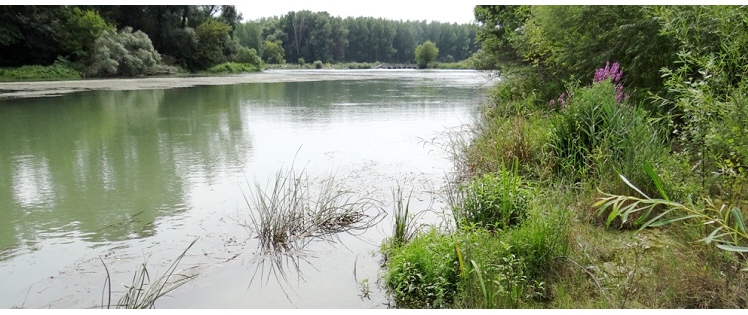
Floodplain near Gabčíkovo, Slovakia, 2018 photo credit: Katrin Teubner
-
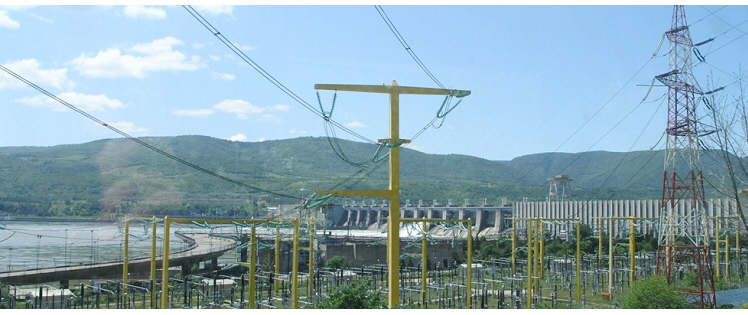
Iron Gates hydroelectric power plant, Romania, 2005 photo credit: Katrin Teubner
-

Alte Donau, Vienna, Austria, 2018 photo credit: Katrin Teubner
-
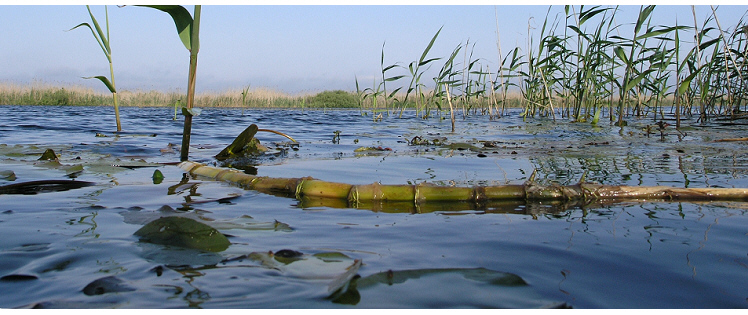
Phragmites australis in the Danube Delta, Romania, 2005 photo credit: Katrin Teubner
-
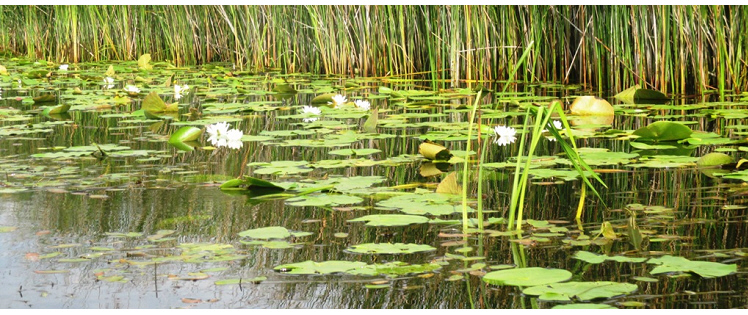
Channel Danube Delta, Romania, 2016 photo credit: Cristina Sandu
-
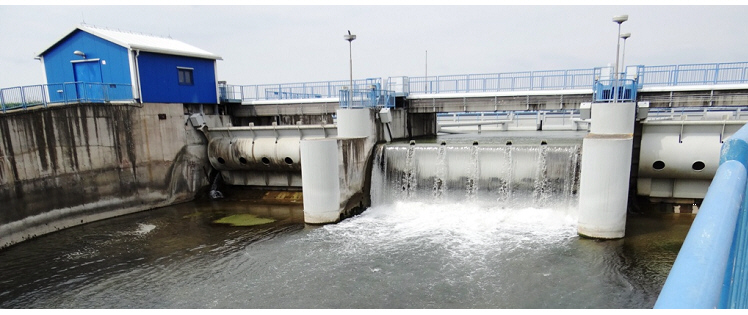
Floodplain at Gabčíkovo, Slovakia, 2018 photo credit: Katrin Teubner
-
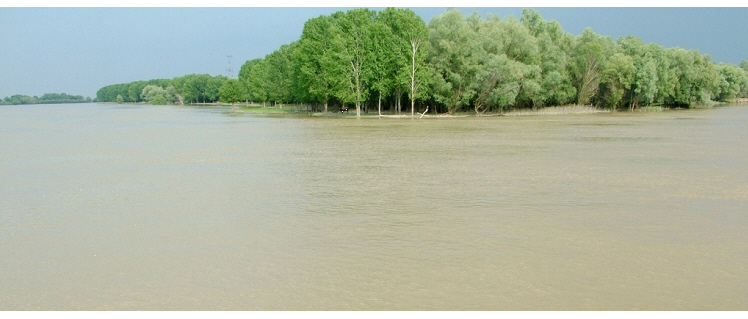
Danube, Romania, 2005 photo credit: Nicolae S.P.
-
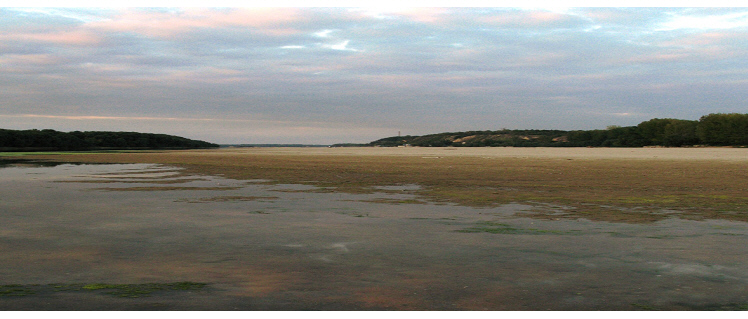
Danube, during low water level, Romania, 2005 photo credit: Nicolae S.P.
-
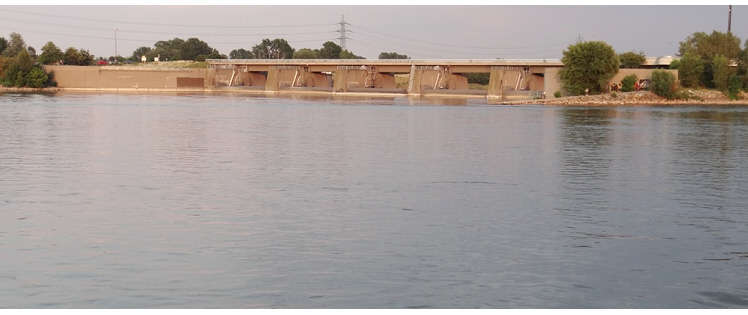
Hydroelectric power plant Grafenwoerth, Vienna, Austria, 2018 photo credit: Katrin Teubner
-
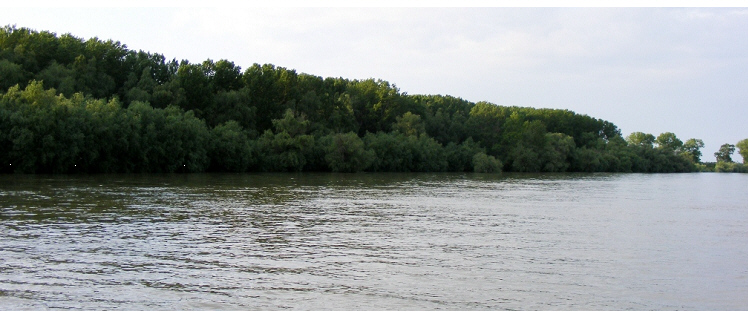
Danube, Romania photo credit: Nicolae Găldean
-

Phragmites australis in the Danube Delta, Romania, 2005 photo credit: Katrin Teubner
-
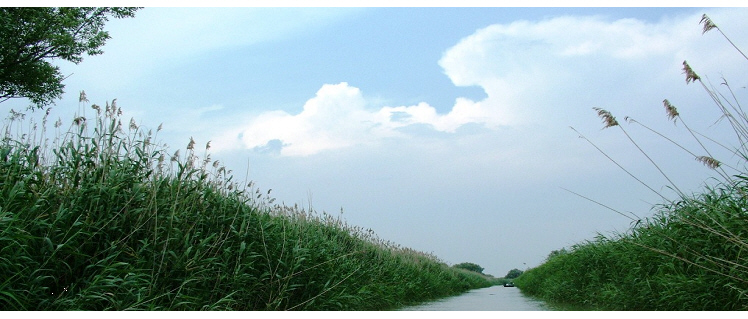
Channel Danube Delta, Romania, 2005 photo credit: Nicolae S.P.
IAD
The International Association for Danube Research, or IAD, is the oldest NGO of an active network of scientists in the Danube River Basin of Europe (Fig.1) (Haidvogl et al., 2023; Link to IDM Publisher, Volume 63/3).
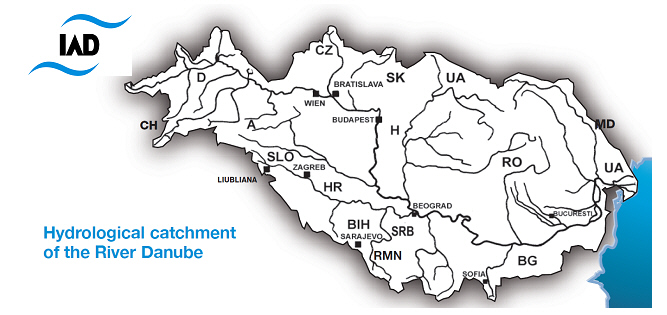
Fig.1: Danube River Basin in Europe, map from p.16 of Danube News 17
Organization
The board of the IAD is composed of the president, vice-president and general secretary, forming the presidium, and currently 12 representatives of member countries. Prof. Dr. Bernd Cyffka is the IAD President from Katholische Universität Eichstätt-Ingolstadt since 2022, and Dr Cristina Sandu the IAD Vice-president also since 2022. Since 2018 PD Dr. Katrin Teubner from Universität Wien is the General Secretary. The names of the country representatives and the expert group leaders can be found at the homepage of the IAD (see current structure).
IAD has Expert Groups in 12 topics covering major ecological and management fields: Water Quality, Biotic Processes, Microbiology, Phytoplankton & Phytobenthos, Macrophytes, Floodplain Ecology, LTSER & Environmental History, Fish Biology & Fishery, Invasive Alien Species, Ecotoxicology, Delta/Fore-Delta, and Sustainable Development & Public Participation (for detailed description see expert groups). Since 1998, IAD has a permanent observer status at the International Commission for the Protection of the Danube River (ICPDR, www.icpdr.org). IAD members are active in the following ICPDR expert groups:

Fig.2: Reinhard Liepolt (1906-1986)
- Expert Group on River Basin Management
- Expert Group on Flood protection
- Hydropower Expert Group
- Climate Change Adaptation Expert Group
- Public Participation Expert Group.
History
The IAD was founded by Reinhard Liepolt (Hydrobiologist, Diplom-Engineer, Univ-Prof. Hofrat, 1906-1996, Fig.2; Liepolt's biography in Kohl and Humpesch 1986) in Vienna (Austria) in 1956 under the auspices of the International Society of Limnology (SIL, limnology.org). Since 2003 it is a registered association (Verein) under Austrian law. In 2010, IAD terminated the affiliation to SIL. It was Liepolt’s wish to join people concerned with the Danube River from the source in Germany to the mouth in Romania. He invited scientific national representatives from all countries of the Danube Region for collaboration. In case of Eastern Europe, he sent official invitation letters to those colleagues who lived "behind the iron curtain". Thanks to him a face-to-face collaboration has been initiated on the various aspects of ecology and river use of the Danube. In a more recent branch of IAD in Austria, the "Österreichisches Komitee Donauforschung" (ÖK-IAD, www.oen-iad.org), scientists with outstanding research related to the Danube Basin in Austria are awarded with the “Liepolt-Preis”.
About 60 Years ago, it seemed a "curiosity that the largest Central European river, the Danube, had found relatively little limnological interest so far". This statement came from Reinhard Liepolt in 1961, a few years after he had founded IAD, and refers to the lack of knowledge about this riverine ecosystem, facing the challenge of cooperation between the numerous Danube countries, which belonged to two political systems spatially separated by the Iron Curtain at that time (Liepolt 1961). The major achievement in the first decade of IAD was the monograph “Limnologie der Donau” (Limnology of the Danube), edited by Liepolt and published by E. Schweizerbart’sche Verlagsbuchhandlung (Nägele & Obermiller) Stuttgart in 1967 (Liepolt 1967). In the same year, the Commission for Hydrology of the Romanian Academy published the monography “Limnology of the Romanian sector of the Danube” (AcRepSocRomania, C d Hidrologie 1967). The Institute of Zoology with the Bulgarian Academy of Sciences (BAS) published in 1978 the book “Limnology of the Bulgarian sector of the Danube River” (“Limnologie des bulgarischen Donauabschnitts”) edited by Prof. Boris Russev and Prof. Wesselin Naidenow (Russev and Naidenow 1978), and in 1994 – the book “Limnology of the Bulgarian Danube Tributaries” (“Limnologie der bulgarischen Donauzuflϋsse”) edited by Prof. Boris Russev (Russev 1994). In 1986, S. Godeanu and V. Popescu-Marinescu released the bibliography “Limnologie der Donau” (Limnology of the Danube, Godeanu and Popescu-Marinescu 1986). Unfortunately, a new monograph could not be realized, but a short update was provided as the Danube chapter in the book “Rivers of Europe” (Elsevier), edited by K. Tockner, C.T. Robinson and U. Uehlinger (Tockner et al. 2009). Other specific IAD publications encompass the four volumes of the book series “Ergebnisse der Donauforschung” (Results of Danube Research) about water quality and plankton/benthos, quoted in Vol.1: IAD 1990, Vol.2: Weber 1993, Vol.3: Schmid 1994 and Vol.4: Kusel-Fetzmann et al. 1998. In 2003, G.A. Janauer et al. edited a special volume of Arch Hydrobiol, Suppl. Large Rivers about “Macrophyte inventory of the River Danube: a pilot study” (Janauer et al. 2003). The Danube water quality maps by R. Schmid in 1995 and 2002, based on benthos investigations, were the predecessor of ICPDR water pollution policy.

Fig.3: Atlas of invasive alien
species, 2017
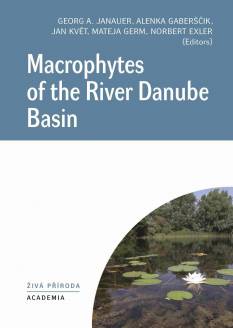
Fig.4: Macrophytes of the River
Danube Basin, 2018
After the big political changes in 1989/1990 the IAD had to adapt its scientific strategy. The decadal programs and Danube ship surveys were abandoned, and the political water management issues were taken by the emerging ICPDR. In 2001, the following IAD research topics were selected as highest priority: Sturgeon Conservation (see below) , Macrophytes as Bioindicators, Microbial Ecology, Danube Water Quality mapping/GIS, and Ecotoxicology (Biomonitoring). In the following years, new priority areas were added, such as Hydromorphology (floodplain ecology) and the potential threat of Invasive Species to biodiversity. Accordingly, IAD representatives and IAD members contributed to books or other key publications by concerning these recent issues:
- (1) the current status of fish communities in the Danube (Kováč 2015),
- (2) the atlas about invasive species edited by T. Trichkova et al 2017 (Trichkova et al. 2017, Fig.3),
- (3) the vegetation survey of the whole Danube River and its main tributaries edited by G.A. Janauer et al 2018 (Janauer et al. 2018, Fig.4),
- (4) the management guide towards a sustainable future of riverine ecosystem which refers mainly to studies on the Danube River System edited by S. Schmutz and J. Sendzimir 2018 (Schmutz and Sendzimir 2018) and
- (5) the assessment of restoration and sustainable management for an urban oxbow of the Danube River (Alte Donau, Vienna) over more than two decades edited by M.T. Dokulil, K. Donabaum and K. Teubner 2018 (Dokulil et al. 2018, Fig.5).
- (6) the measure and assessment of ecosystem services of rivers and floodplains, a handbook which refers to case studies of the Danube and other rivers (RESI) by S.A. Podschun with co-authors and M. Pusch 2018 (Podschun et al. 2018).
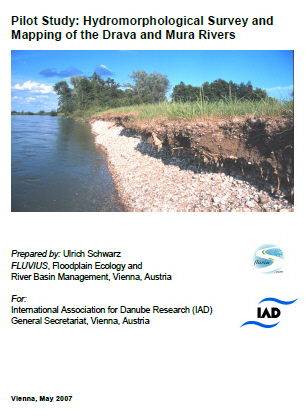
Fig.6: Pilot-Study Drava Mura,
2015, one of the projects
financially supported by IAD

Fig.5: Restauration and
managment Alte Donau, 2018
The IAD-history is well described for subsequent IAD-periods by people from different IAD-countries in 1986/87 (Kothé 1986, Daubner 1987), 1995 (Berczik 1995), 2006 Teodorovic and Bloesch 2006 and 2009 Bloesch 2009. The special volume of Danube News (DN40, Haidvogl and Cyffka, eds) is dedicated to the anniversary of more than 60 years of IAD.
The following presidents took responsibility of IAD: Prof. Dr. Reinhard Liepolt (AT, 1956-1980), Dr. Doz. Imrich Daubner (ČSSR, 1980-1992), Dr. Bodo Wachs (DE, 1992-1998), Dr. Jürg Bloesch (CH, 1998-2004), PD Dr. Ivana Teodorović (RS, 2004-2010), Prof. Dr. Thomas Hein (AT, 2010-2016), Dr. Cristina Sandu (RO, 2017-2021) and Prof. Dr. Bernd Cyffka (DE, since 2022). They were supported by the following General Secretaries: Dr. Edmund Weber (AT, 1978-1992), Dr. Herta Heger (AT, 1992-2000), Dr. Meinhard Breiling (AT 2000-2006), Dr. Harald Kutzenberger (AT, 2006-2016), Prof. Dr. Doru Banaduc (RO, 2016-2018), and PD Dr. Katrin Teubner (DE, since 2018).
Current activities
The association is active in promoting ideas exchange and mobility between scientists to foster cooperation and knowledge transfer. In terms of scientific issues, since the 1950s major water management and environmental issues have been key priorities on the agenda of IAD, and science-based solutions are discussed and proposed. Based on a Danube river basin management plan provided by the ICPDR, IAD established to be a strong science based partner in different critical issues at river basin scale, such as sustainable development of navigation using the large rivers as waterways across Europe, future development of hydropower and functional fish passes to ensure the river continuum, flood protection and floodplain ecology, species conservation & biodiversity and its potential threats by invasive species and various forms of water pollution (e.g. nutrients, organic and toxic substances), and new model approaches for sustainable management solutions in multiple used aquatic environments. Detailed reports and joint statements can be found on the IAD homepage (see e.g. Schwarz 2007, Fig.6; other documents at research -> reports; for resolutions see IAD-resolution 2012, IAD-resolution 2014 and IAD-resolution 2016. IAD members have been participating in the discussion and development of the “Guiding principles on sustainable hydropower development in the Danube Basin” and made major contributions related to the classification of sensitive ecological areas.
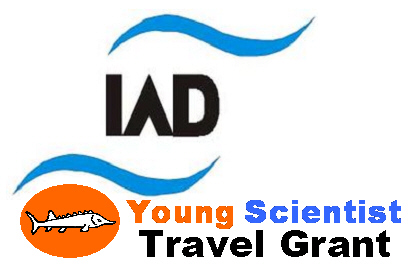
Fig.7: IAD Young Scientist Travel Grant(IAD-YSTR), logo since 2019
IAD is involved in a number of EU and its "EU Strategy for the Danube Region (EUSDR)" project initiatives (www.danube-region.eu), alternative see also at IAD website about Eusdr Flagship Projects. IAD members are further active in the Danube Sturgeon Task Force (www.dstf.eu, see also Sturgeon 2020 by C. Sandu, R. Reinartz and J. Bloesch (eds). The DSTF aims to coordinate and foster the conservation of native sturgeon species in the Danube River Basin and the adjacent Black Sea by the implementation of the Sturgeon Action Plan adopted under the Bern Convention in 2005 (Sturgeon Action Plan 2005">Sturgeon Action Plan, by J. Bloesch et al (eds), alternative see also Danube Sturgeon Task Force). IAD participates at the basin wide Danube Day, on 29 June, organized by ICPDR since 2004. In 2014, the IAD members initiated the establishment of another Task Force of Priority Area 06 of the EUSDR – the Danube River Invasive Alien Species Network (DIAS). Since then IAD supports DIAS and participates actively in its activities, including the development of the Danube Region Invasive Alien Species Strategy (ESENIAS).
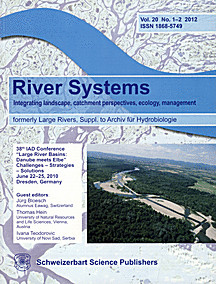
Fig.8: River Systems 2008 & 2012,
proceedings of 36th & 38th conf.
IAD publishes "Danube News" twice a year (see page of volumes at Danube News and of Danube News Articles). The editors of this IAD bulletin are Gertrud Haidvogl (BOKU Wien) and Bernd Cyffka (Aueninstitut Neuburg a.d. Donau, Katholische Universität Eichstätt-Ingolstadt).
IAD Scientific reports
A scientific report is compiled each year, which is shown here from 2017 to the present time. It reports on a wide range of scientific activities within the IAD network summarizing editorial work and publications and describes project implementations.
- IAD Scientific report 2017
- IAD Scientific report 2018
- IAD Scientific report 2019
- IAD Scientific report 2020
- IAD Scientific report 2021
- IAD Scientific report 2022
- IAD Scientific report 2023
- IAD Scientific report 2024
IAD Conferences
Every second year an international IAD Conference is organized. A full list of conferences can be found at the IAD homepage conferences. For many years, IAD supports young scientists to cover the travel costs of IAD conferences and of other IAD-related conferences or the travel expenses for scientific exchange and meetings. (IAD Young Scientist Travel Grant, IAD-YSTR, Fig.7). Special issues about the IAD conference of the 50th Anniversary in Vienna-Klosterneuburg 2006 and the 38th IAD conference in Dresden 2010 were published in the international journal River Systems (Fig.8). The Conference Proceedings and IAD books are hosted by, and can be gathered at the Academic Library of Biology at the Universität Wien (Fachbereichsbibliothek Biologie; see also instruction for using the IAD library).
IAD Summer School
IAD summer schools can only take place if external financial support is secured. In 2024, transport, accommodation, and meals during the IAD summer school were funded by external sources, specifically here the "Executive Agency for Higher Education, Research, Development, and Innovation Funding" (Romania) and the "Danube Delta National Institute for Research and Development" (DDNI Tulcea, Romania). Additional costs, such as health insurance and travel expenses to the Danube Delta (Tulcea), were covered by IAD.
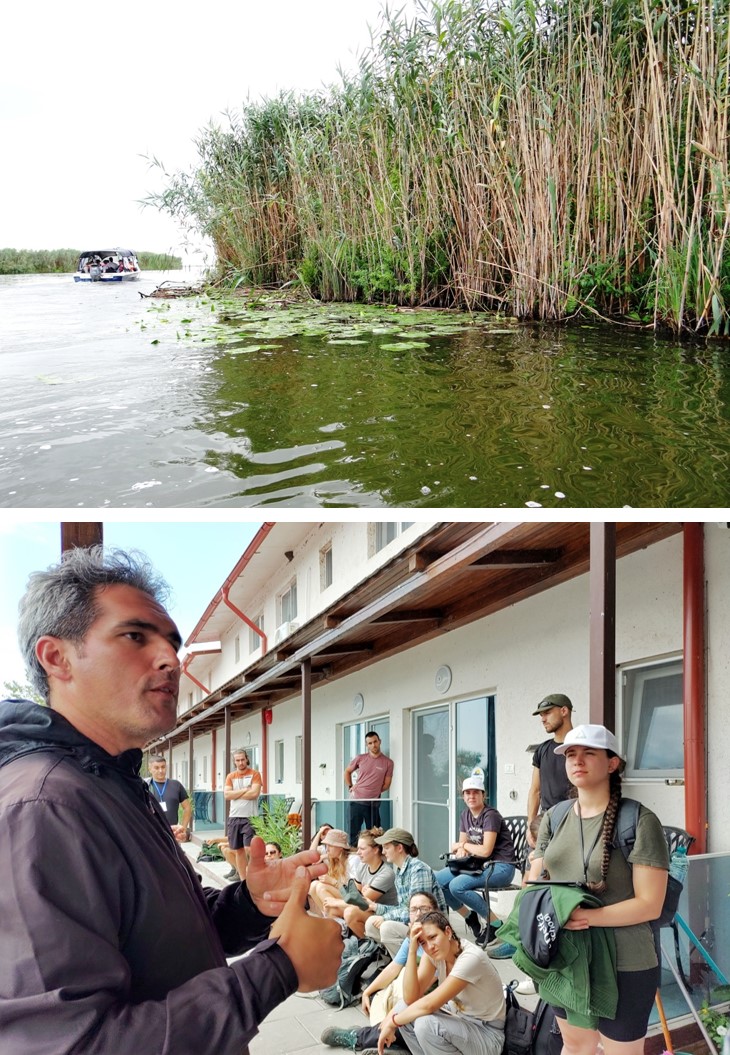
Fig.10: Delta reed area near town
Sulina in the Tulcea county(top),
Fish ex-situ hatchery (bottom), 2024

Fig.9: Plastic cleanup Black Sea
beach (top), Arrival at Danube
Delta Letea Forest (bottom), 2024
By the end of August 2024, 20 student applicants were nominated by IAD national representatives and IAD expert group leaders to attend the one-week IAD Summer School in the Danube Delta. Ten students were from Romania and Austria, while the other ten came from Bulgaria, Hungary, Serbia, and Slovakia. The summer school focused on microplastics (Fig. 9 top), as well as wetland biodiversity and nature conservation, reed management, and landscape development (Fig. 9 bottom, 10) in the context of climate change mitigation. Lecturers, volunteering their time, represented also various IAD countries and shared their expertise across diverse scientific fields, including microbiology, biota field surveys, reed management, wetland landscape planning, nature conservation, climate research, and environmental education. Details can be read in the IAD Summer School Hand-out for students. Further the IAD Summer School Report 2024 is available in the Danube News 50.
References
Academia Republicii Socialiste România, Comisia de Hidrologie (1967): Limnologia sectorului românesc al Dunării. Studiu monographic. Editura Academiei RSR, 651 pages. (In Romanian)
Berczik Á (1995): Die Entstehung und Entfaltung der Donauforschung in Ungarn. Opuscula Zoologica (Budapest) 27.
Bloesch J (2009): The International Association for Danube Research (IAD)— portrait of a transboundary scientific NGO. ESPR, 16. (s11356-009-0151-3)
Daubner I (1987): Die Internationale Arbeitsgemeinschaft Donauforschung. WasserAbwasser, 31:179-194.
Dokulil MT, Donabaum K, Teubner K (eds) (2018): The Alte Donau: Successful restoration and sustainable management - An ecosystem case study of a shallow urban lake. Springer. (DOI:10.1007/978-3-319-93270-5)
Godeanu S, Popescu-Marinescu V (eds) (1986): Limnologie der Donau (Bibliographie), 2, IAD.
Haidvogl G, Bloesch J, Cyffka B, Hein T, Sandu C, Teubner K (2023): Research Cooperation in the Danube River Basin: The International Association for Danube Research (IAD). Der Donauraum 63(3):65-73. (Link to IDM Publisher, Volume 63/3)
IAD (ed) (1990): Ergebnisse der Internationalen Donau-Expedition 1988 (Results of the 1988 River Danube Expedition). Ergebnisse der Donau-Forschung, Vol1, IAD.
IAD-Resolution (2012): Resolution of the 39th IAD conference “LivingDanube”in Szentendre, Hungary.
IAD-Resolution (2014): Resolution of the 40th IAD conference “The Danube and the Black Sea” in Sofia, Bulgaria.
IAD-Resolution(2016): Resolution of the 41st IAD conference “Tributaries as Key Elements in Sustainable Management of the Danube River Basin” in Sibiu, Romania.
Janauer GA, Gaberščik A, Květ J, Germ M, Exler N (eds) (2018): Macrophytes of the River Danube Basin. Nakladatelství Academia (academia.cz_macrophytes_Janauer_et_al)
Janauer GA, Hale P, Sweeting R (eds) (2003) Macrophyte inventory of the River Danube: a pilot study. Arch Hydrobiol Suppl Large Rivers 14. (https://www.midcc.at/main/PDF/LRtitle.pdf)
Jungwirth M, Haidvogl G, Hohensinner S, Waidbacher H, Zauner G (eds) (2014): Österreichs Donau: Landschaft–Fisch–Geschichte. Institut für Hydrobiologie & Gewässermanagement (IHG), Universität für Bodenkultur Wien (BOKU).
Kohl W and Humpesch U (1986): Pr. R. Liepolt - 80 JAHRE. WasserAbwasser, 30:13-42. (the biography of R. Liepolt dedicated to his 80th birthday)
Kothé P (1986): 30 Jahre gewässerkundliche Gemeinschaftsforschung der Donauländer, Der Donauraum, 28. (DOI:10.7767/dnrm.1986.28.jg.26)
Kováč V (2015): Current Status of Fish Communities in the Danube. In: Liška I. (ed.), The Danube River Basin, The Handbook of Environmental Chemistry, Springer-Verlag, Berlin Heidelberg, pp 359-388. (DOI:10.1007/698_2015_377)
Kusel-Fetzmann E, Naidenow W, Russev B (1998): Plankton und Benthos der Donau (The plankton and benthos of the Danube). Ergebnisse der Donau- Forschung, Vol4, IAD.
Liepolt R (1961): Limnologische Forschungen im österreichischen Donaustrom. Internationale Vereinigung für theoretische und angewandte Limnologie: Verhandlungen, 14(1), 422-429.
Liepolt R (1967): Die Limnologie der Donau. Eine monographische Darstellung im Auftrage der Arbeitsgemeinschaft Donauforschung der Societas Internationalis Limnologiae (Limnology of the Danube. A monograph) Schweizerbart, Stuttgart 6.
Podschun SA, Albert C, Costea G, Damm C, Dehnhardt A, Fischer C, Fischer H, Foeckler F, Gelhaus M, Gerstner L, Hartje V, Hoffmann TG, Hornung L, Iwanowski J, Kasperidus H, Linnemann K, Mehl D, Rayanov M, Ritz S, Rumm A, Sander A, Schmidt M, Scholz M, Schulz-Zunkel C, Stammel B, Thiele J, Venohr M, von Haaren C, Wildner M, Pusch M (2018): RESI - Anwendungshandbuch: Ökosystemleistungen von Flüssen und Auen erfassen und bewerten. IGB-Schriftenreihe Heft 31/2018, 187 S. + XIII, ISSN: 1432-508X, (DOI:10.4126/FRL01-006410777)
River Systems (2012): Special issues 38th IAD conference 2010. (schweizerbart_river_systems)
River Systems (2008): Special issues 50th IAD Anniversary, at 36th IAD conference 2006. (schweizerbart_river_systems)
Russev BK (ed) (1994) Limnologie der bulgarischen Donauzuflϋsse. Ministerium fϋr Umweltschutz, Institut fϋr Zoologie, Bulgarische Akademie der Wissenschaften, Sofia: Verlag "Paper Tiger", 255 pp. (In Bulgarian)
Russev BK, Naidenow WT (eds) (1978) Limnologie des bulgarischen Donauabschnitts [Лимнология на българския сектор на р. Дунав]. Institut fϋr Zoologie, Bulgarische Akademie der Wissenschaften, Sofia: Verlag der Bulgarischen Akademie der Wissenschaften, 308 pp. (In Bulgarian)
Schmid R (1994): Limnologie und Gewässergütezustand der bayerischen Donau und ihrer wichtigsten Zubringer. Donaubasisuntersuchung 1985–1992 (The limnology and quality state of the River Danube and its main tributaries in Bavaria. Basic Danube investigation 1985–1992). Ergebnisse der Donau- Forschung, Vol3, IAD.
Schmutz S, Sendzimir J (eds) (2018): Riverine ecosystem management: Science for governing towards a sustainable future. Springer. (9783319732497)
Schwarz U (2007): Pilot Study: hydromorphological survey and mapping of the Drava and Mura Rivers. IAD Report prepared by FLUVIUS, Floodplain Ecology and River Basin Management, Vienna. pp. 140.
Sturgeon Action Plan | Bloesch J et al. (eds) (2005): A program for the protection and rehabilitation of Danube sturgeons. Danube Sturgeon Task Force (DSTF) & EU Strategy for the Danube River (EUSDR) Priority Area (PA) 6 – Biodiversity.
Sturgeon 2020 | Sandu C, Reinartz R, Bloesch J (eds) (2013): “Sturgeon 2020”: A program for the protection and rehabilitation of Danube sturgeons. Danube Sturgeon Task Force (DSTF) & EU Strategy for the Danube River (EUSDR) Priority Area (PA) 6 – Biodiversity.
Teubner K, Balaican D (2024) Welcome to IAD Scientific Summer School in the Danube Delta. Romania, 25. August - 31. August 2024. Hand-out :27 pages
Teubner K, Balaican D (2024) Hands-On Science: IAD Summer School in the Danube Delta, 2024. Danube News 50:15-18
Teodorovic I, Bloesch J (2006) IAD’s 50th Anniversary: Re-defining the scientific Profile.
Tockner K, Uehlinger U, Robinson CT (2009): Rivers of Europe. Academic Press. (978-0-12-369449-2)
Trichkova T, Vladimirov V, Tomov P, Todorov (eds) (2017) АТЛАС на инвазивните чужди видове от значение за Европейския съюз (In Bulgarian, Atlas of invasive alien species of importance to the European Union), ИБЕИ- БАН.
Weber E (1993): Wasserbeschaffenheit der Donau von Passau bis zu ihrer Mündung. (Water quality of the River Danube from Passau to its mouth.) Ergebnisse der Donau-Forschung, Vol2, IAD.
first online: 14/10/2019, update: 20/10/2019 Print Page as PDF - will be provided soon
